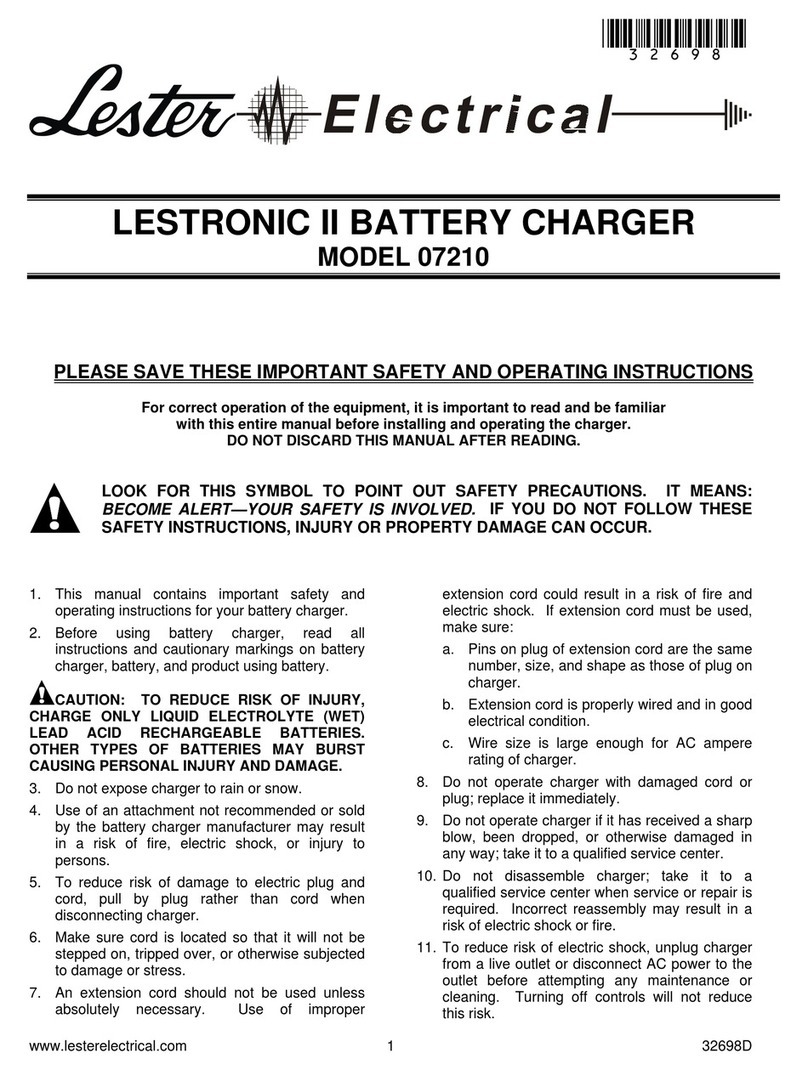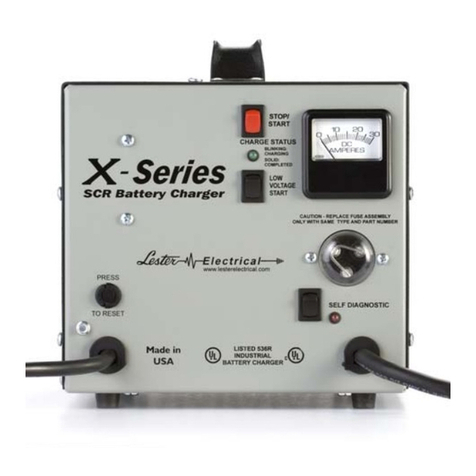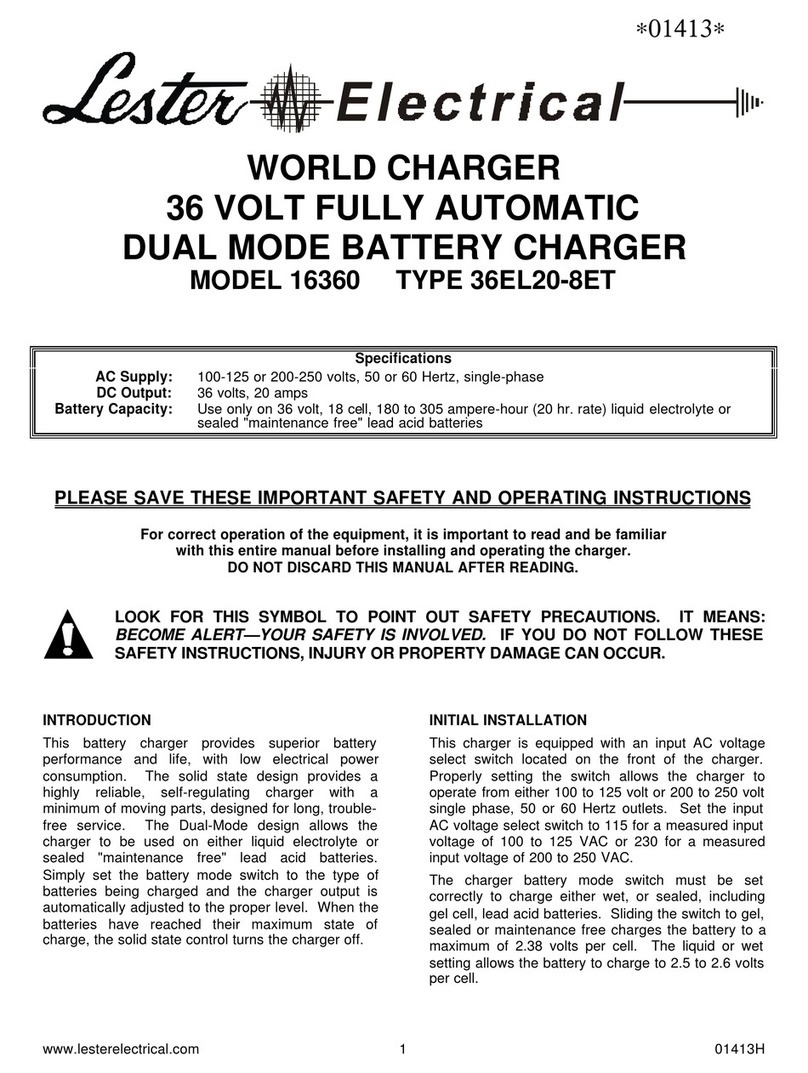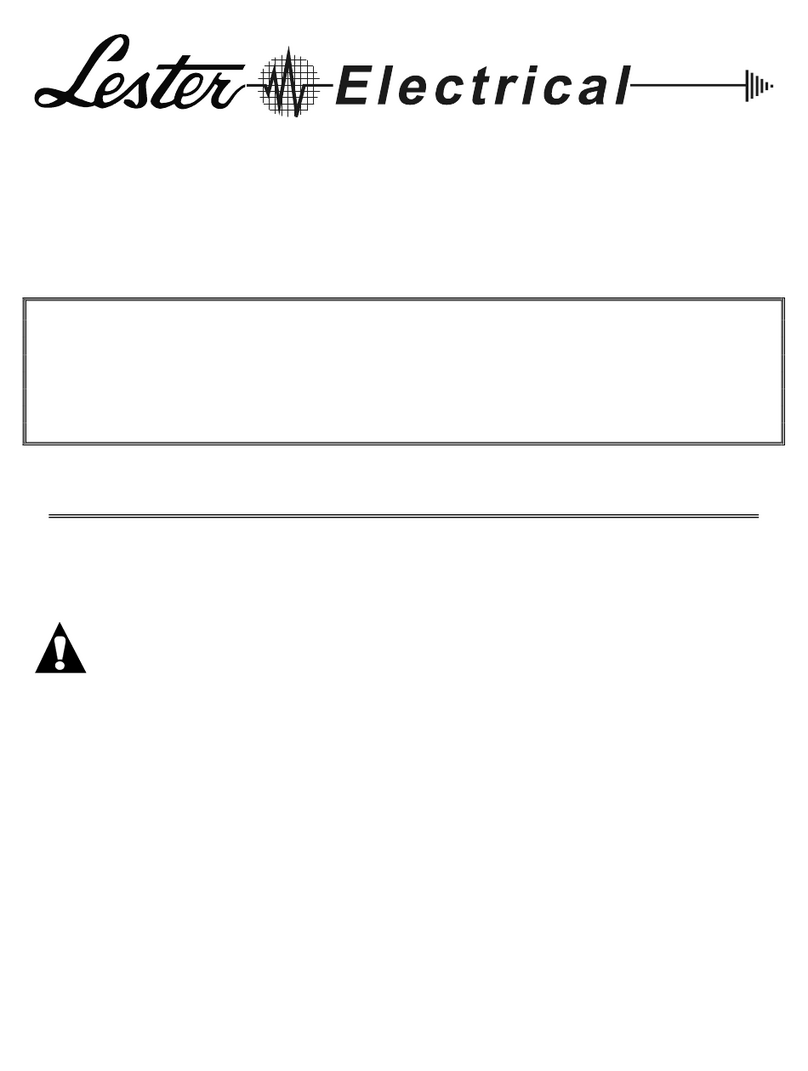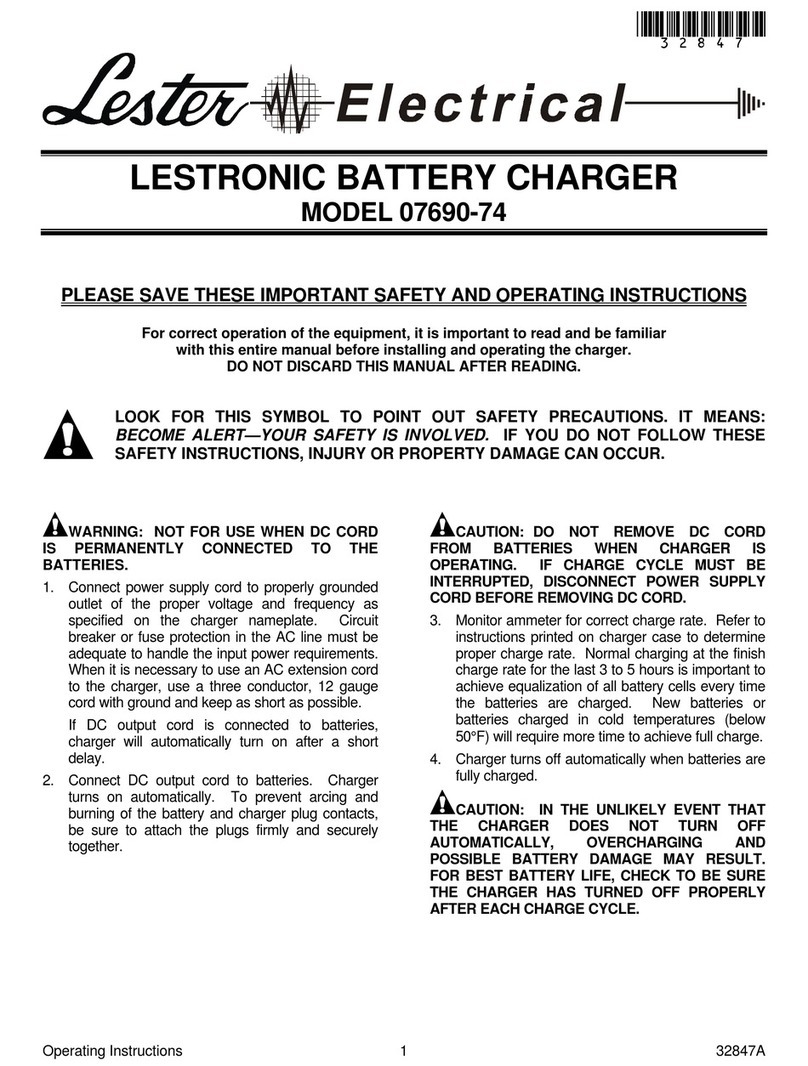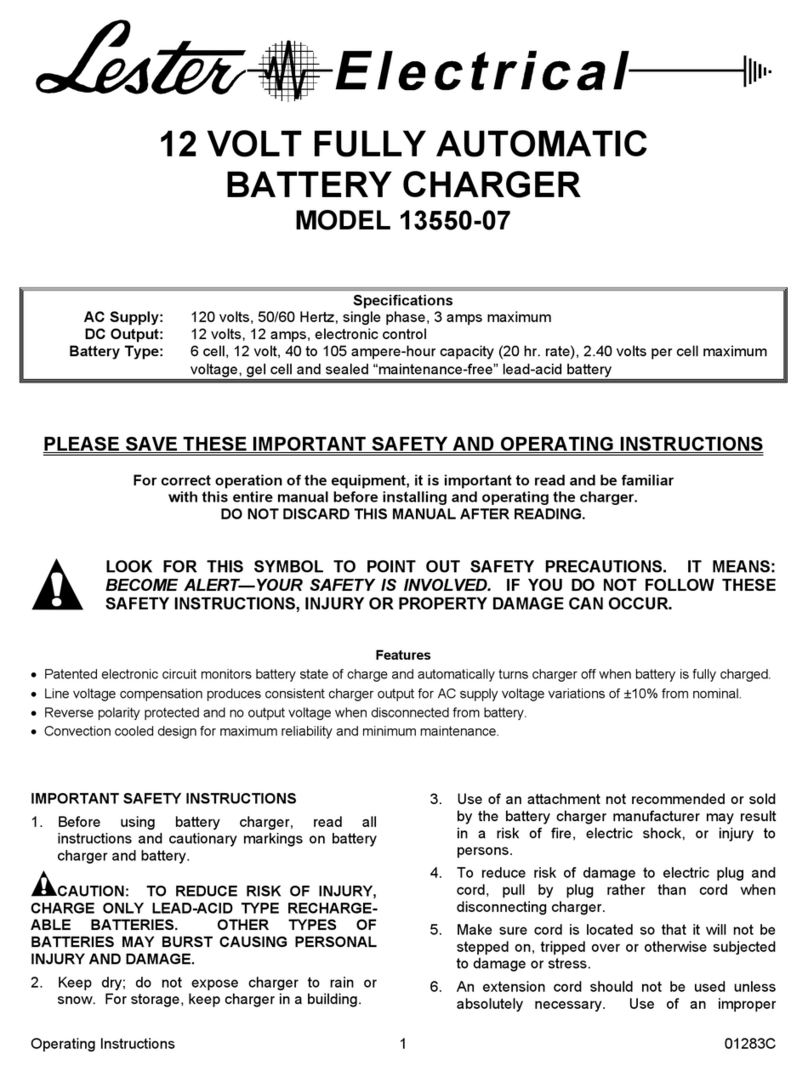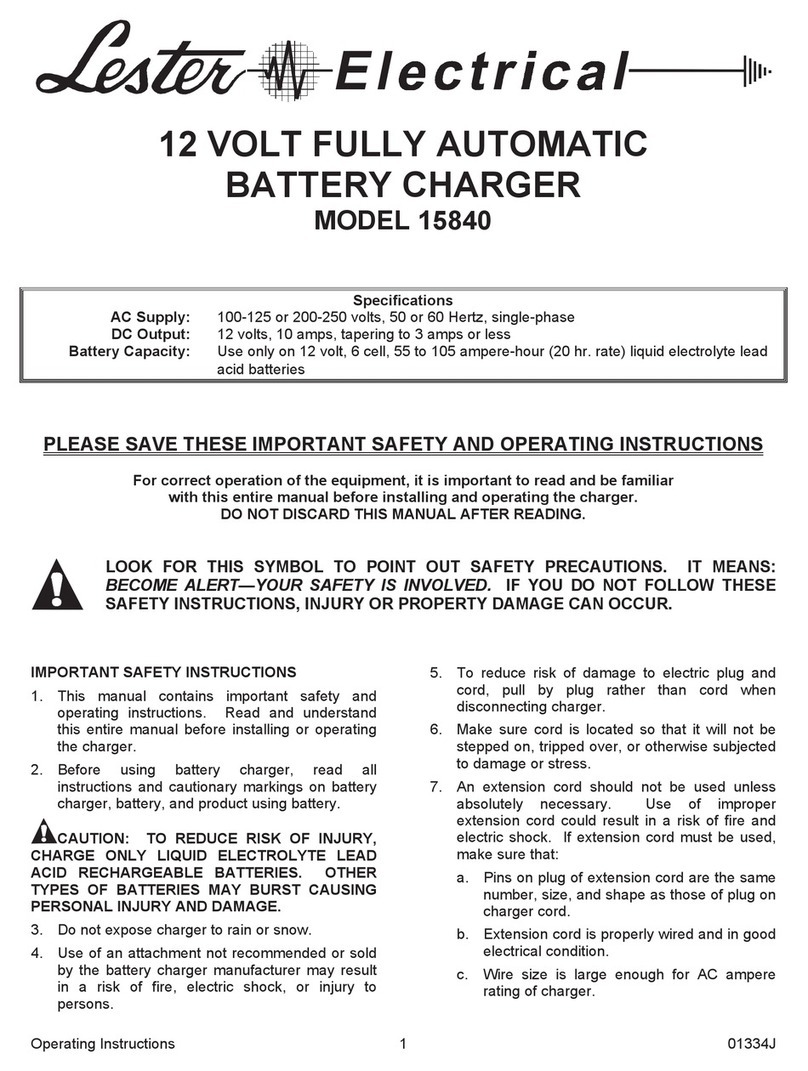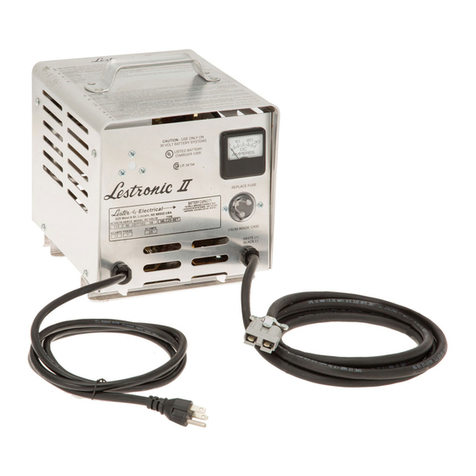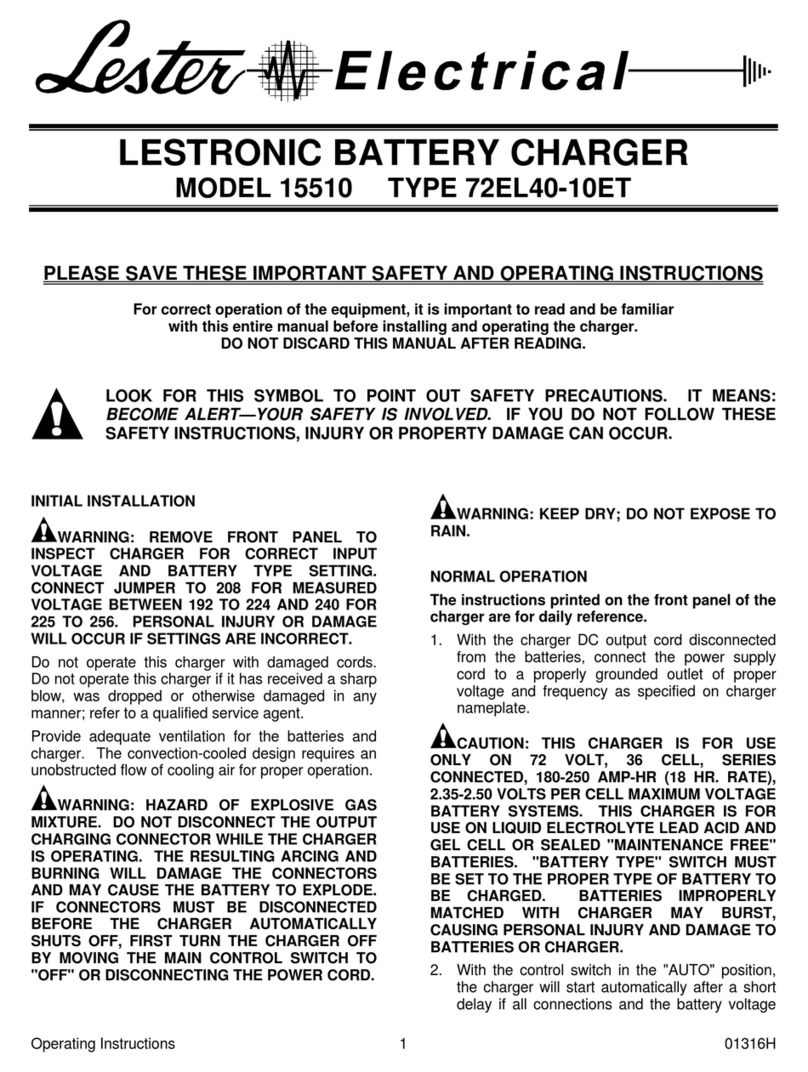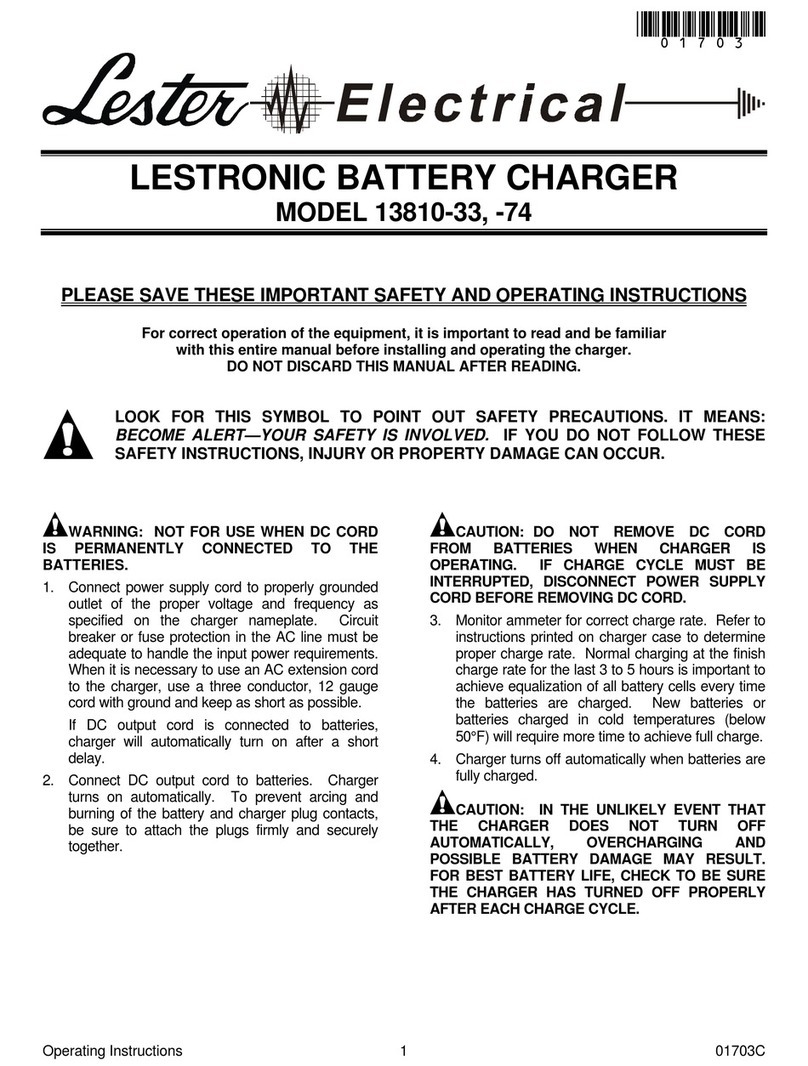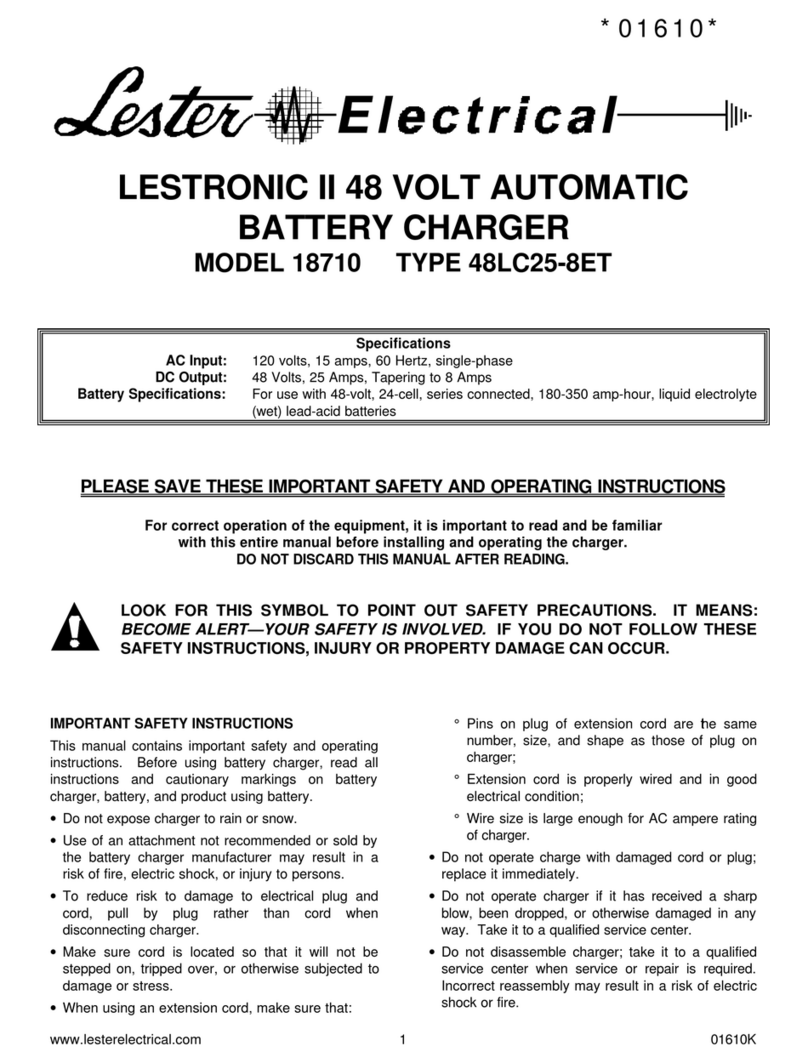
Operating Instructions 401537C
b. Charging new batteries (batteries with less
than 50 discharge/charge cycles).
c. Charging cold batteries (ambient temper-
atures below 65°F). When charging new or
cold batteries, a higher than normal finishing
charge voltage can be expected. This
results in a low finish charge rate (2 to 5
amps), and additional time is required to
achieve equalization of all battery cells.
Refer to a qualified service agent if the
charger does not turn off within the specified
time.
As batteries age, the charge rate may no longer
decrease to the 6 to 10 amp finish rate. This is
normal; as battery cells wear out, they weaken
resulting in a lower than normal finish voltage.
However, the charger will still determine when
the battery is as charged as it can be and then
turn off. Even though they are properly charged,
older batteries will gradually lose capacity, and
should be replaced when they will no longer
perform as required.
WARNING: DO NOT LEAVE THE CHARGER
DC OUTPUT CONNECTOR CONNECTED WHILE
UNATTENDED FOR TWO OR MORE DAYS IN A
ROW. SEVERE OVERCHARGING AND
POSSIBLE DAMAGE TO THE BATTERIES WILL
RESULT IF THE CHARGER ELECTRONIC TIMER
KIT SHOULD FAIL AND NOT TURN OFF, OR
TURN BACK ON.
5. After the charger has turned off, disconnect the
DC output plug from the receptacle by grasping
the plug body and pulling the plug straight out of
the receptacle.
WARNING: TO AVOID DAMAGE TO THE DC
OUTPUT PLUG AND CORD, DO NOT PULL ON
THE CORD.
BATTERY STORAGE MAINTENANCE
When the machine is not in use, charge the batteries
once each week. Disconnect the plug at the end of
the charge.
PROPER CARE OF DEEP CYCLE MOTIVE
POWER BATTERIES
Motive power batteries are subjected to severe
deep-cycle duty on a daily basis. Although these
batteries are designed to withstand such duty, the
following precautions must be observed to obtain
good performance and maximum cycle life.
CAUTION: ALWAYS WEAR PROTECTIVE
EYE SHIELDS AND CLOTHING WHEN WORKING
WITH BATTERIES. BATTERIES CONTAIN ACIDS
WHICH CAN CAUSE BODILY HARM. DO NOT
PUT WRENCHES OR OTHER METAL OBJECTS
ACROSS THE BATTERY TERMINAL OR
BATTERY TOP. ARCING OR EXPLOSION OF
THE BATTERY CAN RESULT.
1. When installing new batteries, be sure the
polarity of each battery and overall battery pack
is correct. Due to the electrical characteristics of
this charger, it is possible to hook up one of the
6 volt batteries reverse polarity and not blow the
fuse when charging. Battery and/or charger
damage can result.
2. New batteries should be given a full charge
before their first use because it is difficult to
know how long the batteries have been stored.
3. Limit the use of new batteries for the first 20
cycles. New batteries and older batteries that
have been in storage are not capable of their
rated output until they have been discharged
and charged a number of times.
4. DO NOT EXCESSIVELY DISCHARGE THE
BATTERIES. Excessive discharge can cause
polarity reversal of individual cells resulting in
complete failure shortly thereafter. Heavily
discharging (over 60%) new batteries before
they have been broken in (approximately 20
cycles) can cause permanent cell damage,
resulting in reduced energy capacity and
shortened life.
5. Maintain the proper electrolyte level by adding
water when necessary. Distilled or deionized
water is free of contaminants and preferred for
this use. Never allow the electrolyte level to fall
below the top of the battery plates. Electrolyte
levels lower during discharge and rise during
charge. Therefore, to prevent the overflow of
electrolyte when charging, it is mandatory that
water be added to cells AFTER they have been
fully charged; do not overfill. Old batteries
require more frequent additions of water than do
new batteries.
6. Hard crystalline sulfates form when batteries in
storage are not maintained in a charged active
state. Internal self-discharge can bring about
the start of this condition in as little as three days
in warm temperatures. Batteries allowed to sit
unmaintained in storage will self-discharge,
sulfate to various degrees and lose capacity.
Repeated charging without using the batteries
between charges may recover some of the lost
power, range, and life, but some permanent loss
should be expected.
7. When the temperature falls below 65°F, the
batteries should be placed on charge as soon
after use as possible. Cold batteries require
more time to fully recharge.
